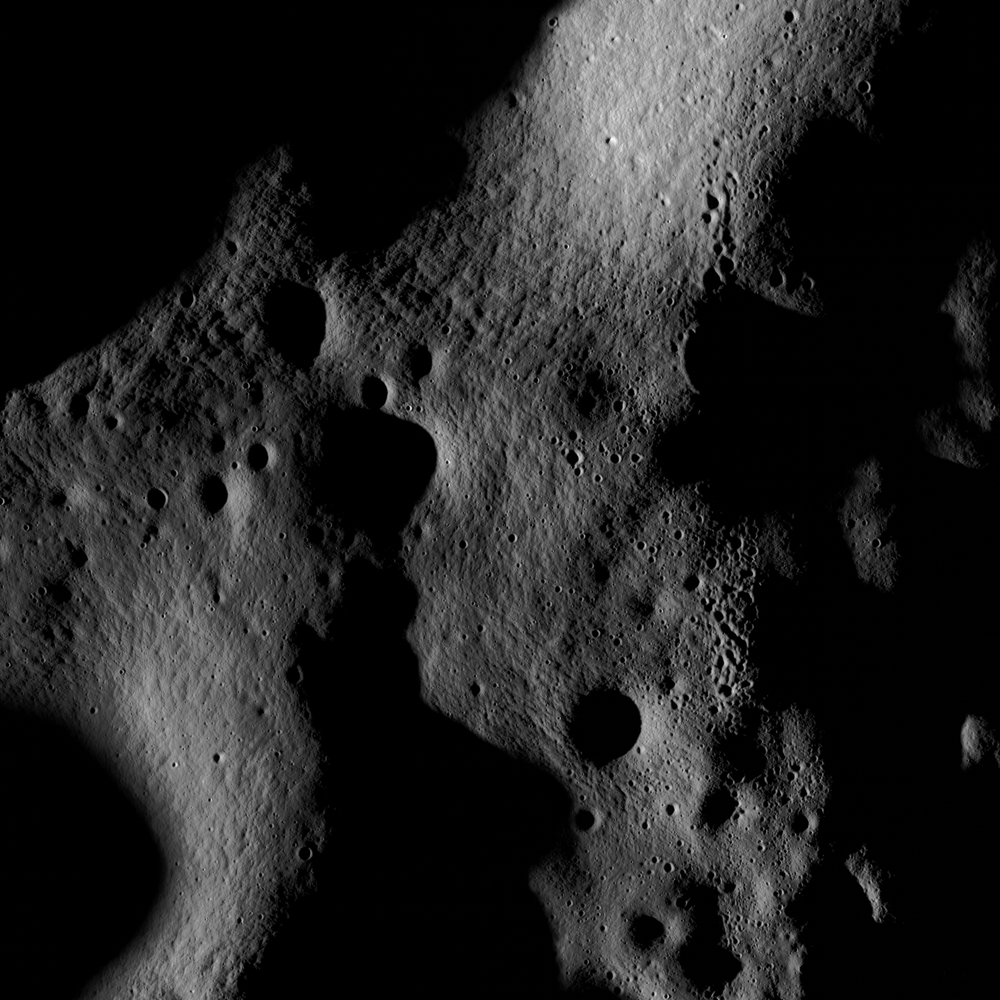
The LROC Narrow Angle Camera (NAC) scans one line at a time so it builds up a complete picture through the motion of the spacecraft. LRO is traveling about ~1600 meters a second (faster than a speeding bullet), so the NAC must read out its array in less than a millisecond for a full resolution image at its nominal 50-km orbit. Currently LRO is in the elliptical commissioning (30x199 km) orbit. When this 2x-summed image was taken on July 4th, 2009 the spacecraft was at an altitude of 187 km, resulting in an exposure time of 2.5 milliseconds. Scrolling through the lines as a movie gives a feel for the spacecraft’s motion in orbit, albeit at a 30% slower rate.
The first half of the movie shows the eastern rim of Rozhdestvenskiy W crater at sunrise. With the low incidence angle casting large shadows, small features such as “elephant skin” texture and secondary craters are brought into high relief.
Fifty seconds into the movie, we see the western half of Bosch, a newly-named crater approximately 18 km in diameter. What the movie shows is a bit abstract, but the pitch black on the right is the shadowed floor of the crater and the illuminated strip on the left is the lighted rim of the crater.
At one minute and 20 seconds a scalloped shadow inside an unnamed crater (~14 km diameter) comes into view; the distinctive shape tells us that the unseen rim to the west is very uneven. Future passes will reveal the west rim. Over the next month LROC will complete its first of several maps of the north polar region. View the full resolution NAC image!
Published by Mark Robinson on 7 July 2009